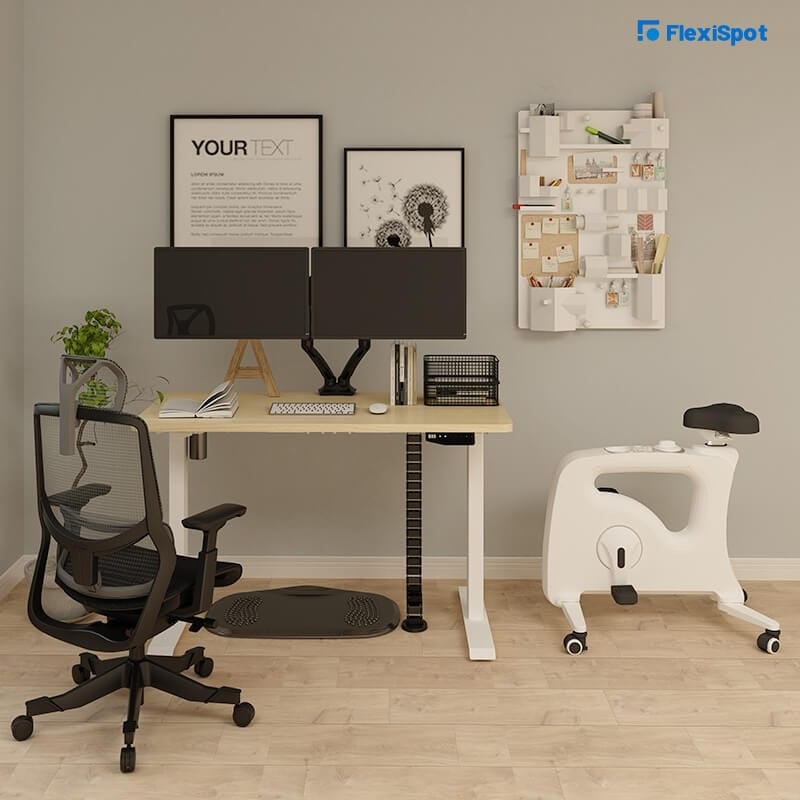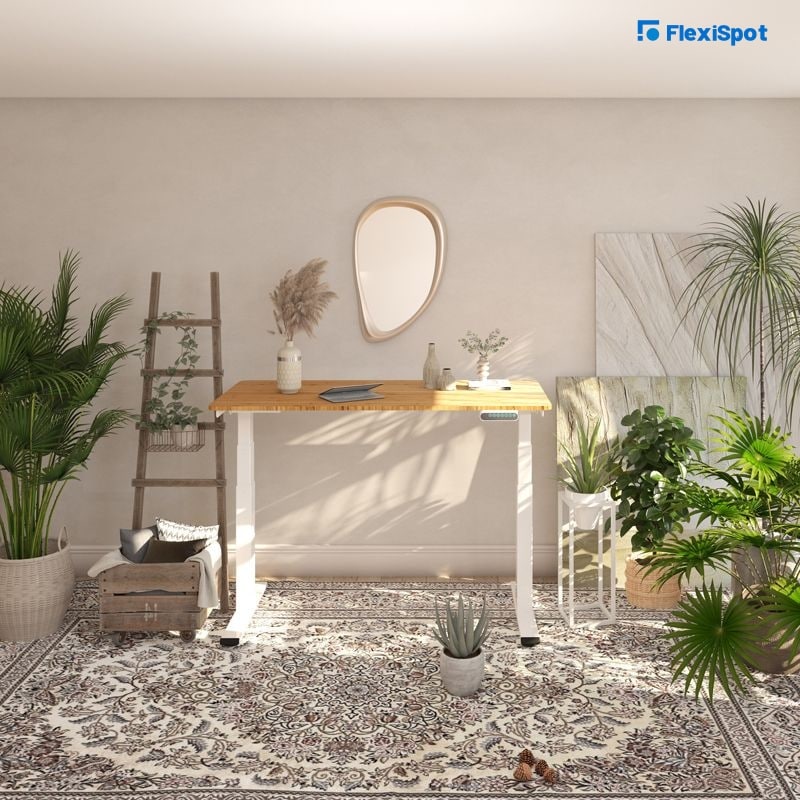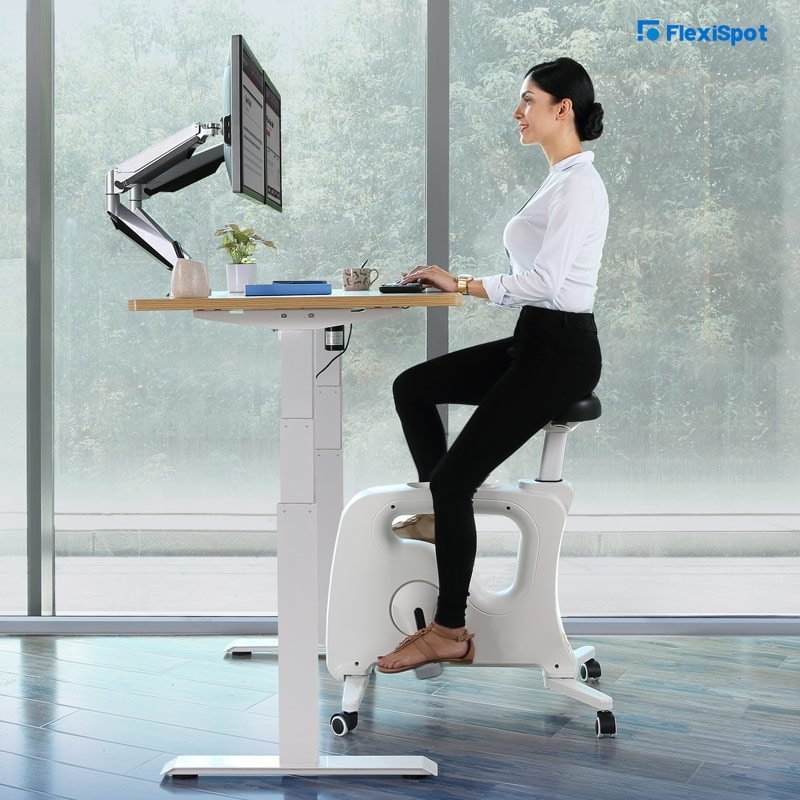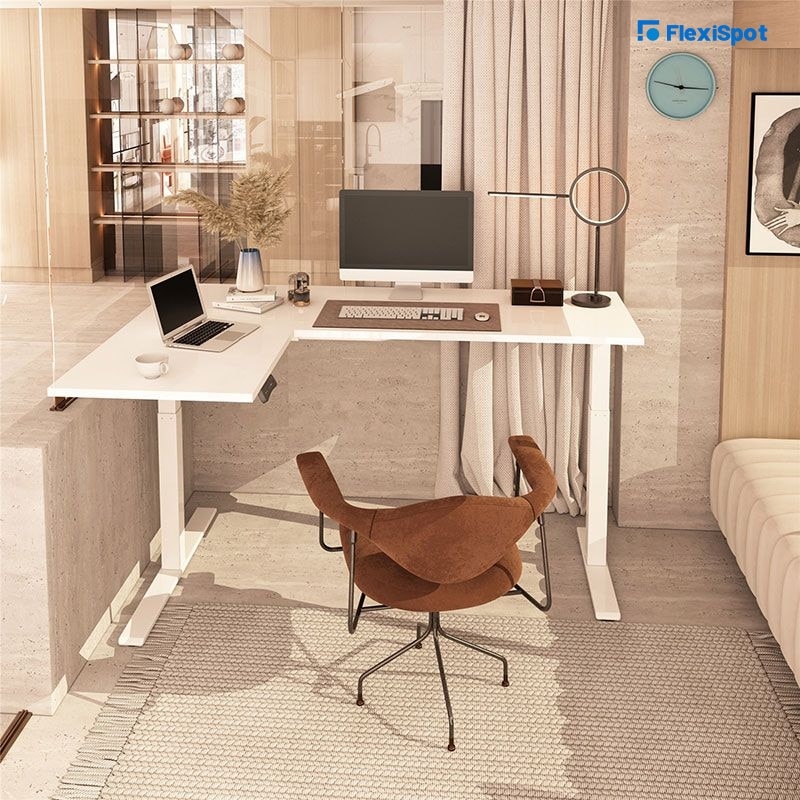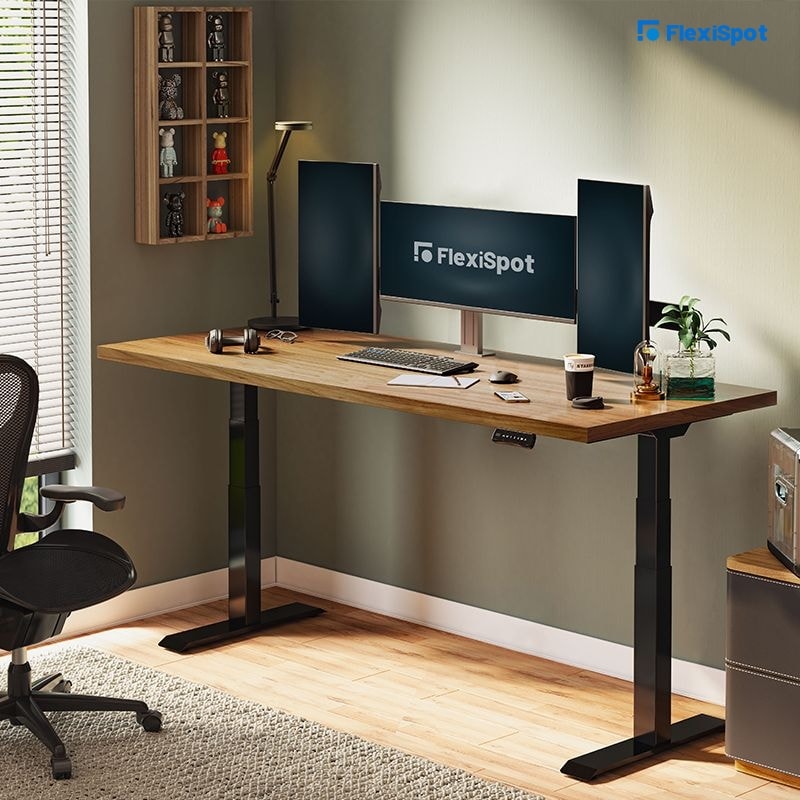When it comes to office design, aesthetics play an integral role as it revolves around the idea of making the workspace appear more pleasing. After all, there is a positive correlation between working in an aesthetically pleasing space and productivity. But what about ergonomics? It is the process of designing or arranging workplaces and systems in a way that they fit the people who use them so they can work more comfortably and productively. Is ergonomics also important? Is ergonomics as important as aesthetics? Which is more important?
Let's take a closer look at both ergonomics and aesthetics and understand the relevance of each in a workplace to find out the answer which is more important.
What is Ergonomics?
By definition, ergonomics is the process of designing or arranging workplaces and systems in such a way that they fit the people who use them. The bigger idea behind ergonomics is to make working spaces more comfortable for the users so their productivity increases, eventually increasing business profitability.
When people generally hear about ergonomics, they think of elements such as office furniture that aim to make the working environment more comfortable for the employees. However, ergonomics is a broader field that aims to learn more about human limitations and abilities and apply this learning to improve human interaction with products, systems, and the larger environment, including the working environment.
Therefore, ergonomics can be widely applied to all aspects of design, including the design of workplaces, homes, and leisure environments. After all, the primary purpose of ergonomics is to improve workspaces and environments to reduce the risk of injury or harm.
Ergonomics is an ever-growing field because as technology evolves, there is a constant need to ensure that the human body interacts with systems and processes effectively, so they do not harm the body's natural design. Think, for example, the transition from desktop computers to laptops which raises the need for ergonomics to change so the human body can better interact with laptops without damaging the natural alignment of the human body.
What is Aesthetics?
Aesthetics is another integral aspect of design that revolves around the idea of making a product look and feel good. Primarily, it defines a product or system’s pleasing qualities related to the design. Since the first impression of any product or system is visual, it makes aesthetics very important. It includes factors such as color, pattern, texture, shape, balance, scale, and visual weight.
Unlike what is commonly believed, aesthetics is not just about what we see. Rather it is associated with what appears beautiful when humans rely on their sense of sight. So essentially, aesthetics encompass everything that corresponds to certain parameters of how we define beauty. While some forms of appreciation for beauty come from cultural experiences, others are based on physiology and the use of light and shadow, and that's all that designers use to complement their designs' usability and attractiveness to people.
Why is Ergonomics Important?
Given the definition of ergonomics, it is a required field that plays a critical role in the workplace and for the greater population.
In workspaces and organizations, ergonomics serves as a time-saving technique directly related to making the working experience more comfortable for the employees. As a result, employees experience an increase in productivity as when they work comfortably; there is an improved focus that helps reduce the working hours.
Moreover, there is also a reduced risk of workplace injuries which decreases fatigue and associated absenteeism, which also positively contributes to enhanced employee productivity.
Hence, ergonomics plays an integral role in workplaces. It aims to create safe, comfortable, and productive workspaces by integrating human abilities and limitations into the design aspects of a workspace.
However, the significance of ergonomics is not limited to workplaces. Ergonomics is an equally important area of consideration for the greater population. The number of the elderly population in the U.S. is expected to increase from 16.9 % in 2020 to 21.4% in 2050. With the changing demographics of the population, there will be a need to revisit the existing design of equipment, services, and systems so that the changing needs of the aging population can be accommodated which shows that ergonomics play an integral role in making life convenient both inside and outside the workplace.
Why is Aesthetics Important?
If you look at the definition of aesthetics, it is an element of design that is related to the study of art. Aesthetics is, in essence, the study of beauty and art and what it contains. The idea is integral because it delves into answers like what beauty is and how we can rely on the aspects of beauty to enhance the visual appeal of any object or space.
Aesthetics, therefore, plays a critical role in workplace design as well as the design of all other structures and systems in life. In a workplace setting, aesthetics serves as a time-management tool. When employees are working in an aesthetically pleasing workspace, it enhances their focus. Moreover, on an emotional level, working in an aesthetically pleasing workspace increases feelings of happiness and calm and allows people to better connect with their surroundings. Therefore, aesthetics play an integral role in boosting productivity, which translates into better profitability for the organization.
Likewise, aesthetics plays an important part outside the workspace. Whether it is your home or any other people that you visit for leisure, if it is aesthetically pleasing, you will only be able to enjoy an enhanced experience that boosts satisfaction and happiness. Therefore, being aesthetically pleasing improves your happiness and overall life satisfaction.
Ergonomics and Aesthetics: Which Is More Important?
Both ergonomics and aesthetics are important in a workplace setting. Both serve as an indirect time management technique as both focus on different aspects of making the working environment more convenient for employees.
Ergonomics focuses on enhancing the work experience by making the interaction with tools and systems more comfortable. For example, ergonomic office chairs and other ergonomic furniture like standing desks make the working experience more comfortable for employees. When employees are more comfortable with the work arrangement, it enhances their focus, which translates into better productivity and outcomes for the organization.
Similarly, aesthetics focuses on making the workspace appear more pleasant to the employees, and only when employees work in a visually pleasing environment will they be able to produce better outcomes.
Given that both ergonomics and aesthetics play a similar role, the key question is which is more important?
The answer is both.
Both ergonomics and aesthetics are integral in workspace settings and beyond. It is important for the employees to work in a comfortable environment where interacting with people, products, and systems are convenient. Moreover, it is equally important for employees to work in a visually pleasant setting so they can generate the outcome that is expected of them. However, the key is to balance both ergonomics and aesthetics in a workplace setting.
Setting up an Ergonomic Workstation
Over the years, the workstations have evolved from being used for writing and note-taking to accommodating PCs and laptops. However, with the changing technology and the needs of employees, a traditional desk may not always be the most convenient workspace solution. A height-adjustable standing desk is becoming an increasingly popular alternative to traditional workstations as it allows you to switch positions from sitting to standing and vice versa at your convenience.
Moreover, it is integral to opt for the appropriate placement and tilt of the screen and use an ergonomic office chair to maximize comfort while working.
Decorating Your Workspace
Since aesthetics is an integral aspect of setting up a workspace, it is important to create an environment that allows you to retain concentration and focus while working. Make sure the lighting, color of the walls, flooring, and accessories that you use to decorate your workspace gel well together and make an aesthetically pleasing combination.
Balancing Aesthetics and Ergonomics in Your Office Furniture
When it comes to creating an ergonomic and aesthetic workspace, choosing office furniture can be a challenge. However, it is important to balance both aesthetics and ergonomics in your office furniture to make the task easier for you.
At Flexispot, you will find office furniture that is ergonomically designed to maximize comfort for the employees and is aesthetically pleasing so you can create a visually appealing and functional workspace. From ergonomic office chairs to standing desks and height-adjustable standing desks, Flexispot offers office furniture and accessories that are designed to give you an ultimate work experience while adding appeal to your workspace.
Visit our website today to learn more about height-adjustable standing desks, ergonomic office chairs, and other workspace-related accessories.

